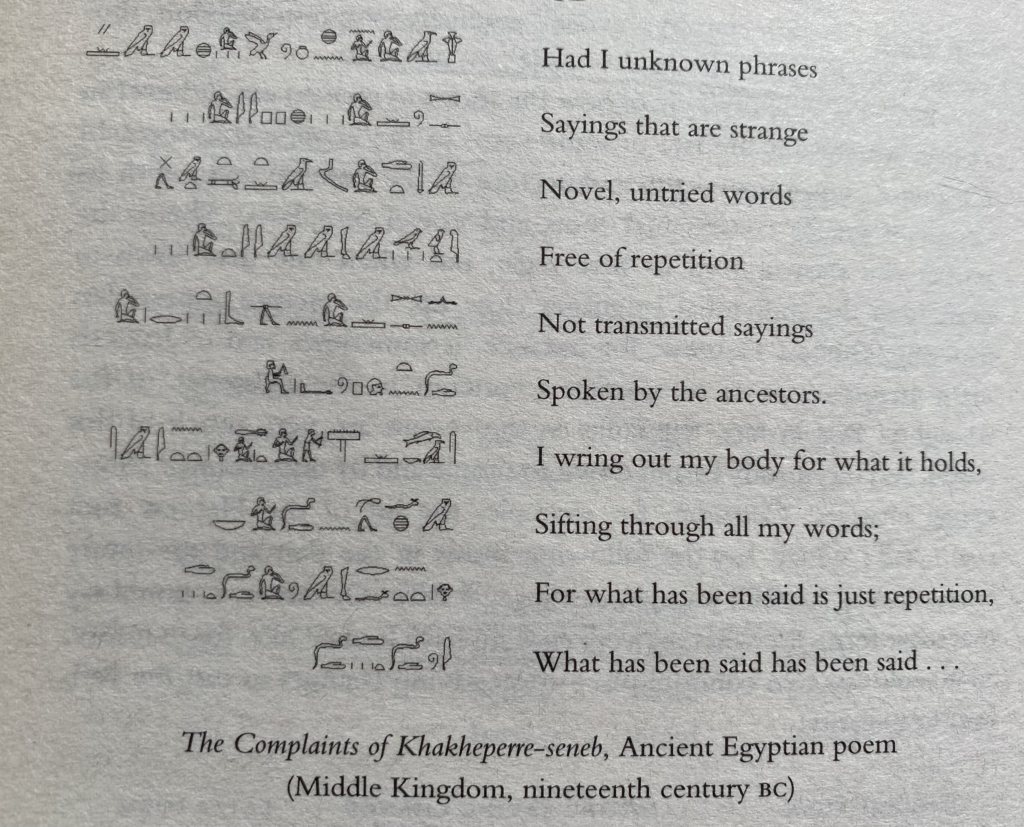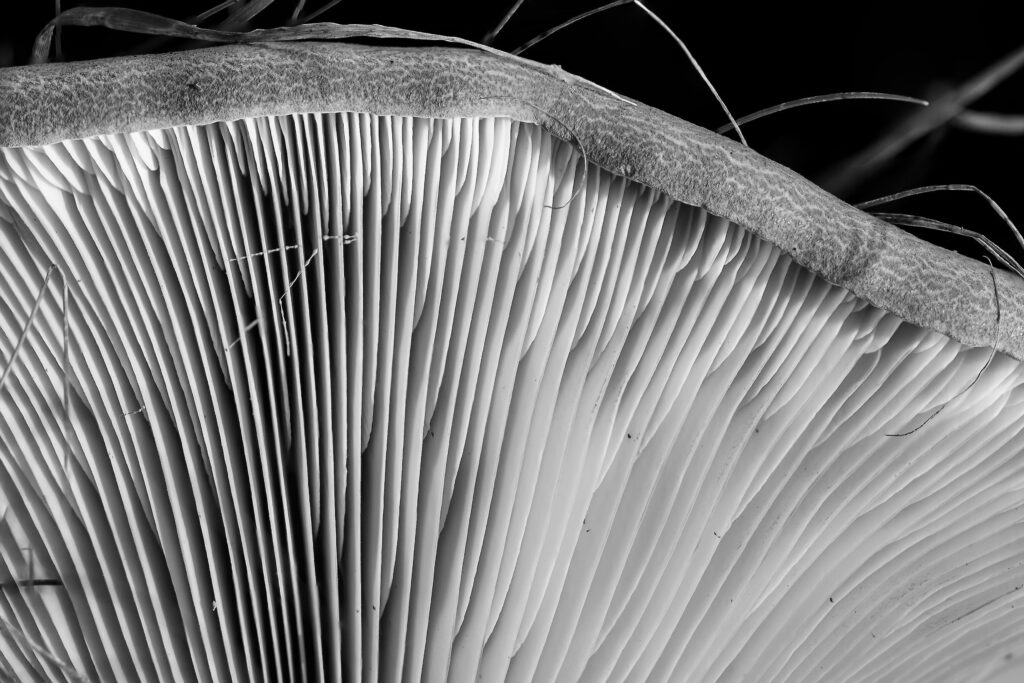
Source: Alex Pillen Photo of Deutscher 2006, p. 96
These are the complaints of Kakheperre-seneb, a poem written in hieroglyphs in ancient Egypt in the 19th century BC. Nearly 4 millennia ago he is concerned about innovation, originality: ‘I wring out my body for what it holds, sifting through all my words’. The act of sifting refers to an element of choice in language, new strands that can be woven into old strands. In ancient Greece and Rome as well as in Vedic India language was imagined along two intertwining axes.

ROPE: INTERTWINING AXES AT DIFFERENT SCALES
Source: Pixabay
Contemporary analysis presents us with these axes at different possible scales. At a larger scale we can visualise poetic diction that combines improvised narration with older elements, traditional expressions and formulas. This same dynamic is also portrayed at a smaller scale within each verse or sentence. Then syntax intertwines with a freedom to choose words. Syntax stands for the old strand, a pre-determined arrangement of words within the sentence, word order, the sentence structure and the relation between its parts. Woven into that are an array of possible vocabularies, selected by each author. In addition to these I would like to visualise an even smaller scale of intertwined axes, strands of grammar and lexical innovation. Indeed ‘monumental grammar’ plays a role in the architecture of language, but so does the individual and the invention of new words. This structure in ‘natural language’ first visualised by ancient intellectuals seems especially evocative if we consider an even smaller scale within our natural world, the two strands of DNA. It may be useful to revisit the image of the rope above at this point.

Source: Pixabay
Already 4 millennia ago Kakheperre-seneb, is aware of the long history of utterances and ideas that preceded him. He warns his contemporaries and us now: ‘for what has been said is just repetition, what has been said has been said…’. As we consider the architecture of language though, repetition holds things together. Repetition resembles a glue within the structure of language that helps to define its shape. This is how the chunks of a story are created by the storyteller. Intertwining axes give body to this structure at different scales as each of the two strands holds language into place.

Source: Pixabay
References
Guilleux, N. (2016). Of metaphorical matrices and their networks: Generally speaking, and in the field of textile activities. In Fanfani, G., Harlow, M. & Nosch, M.L (Eds.) Spinning tales and the song of the loom. The use of textiles, clothing and cloth production as metaphor, symbol and narrative device in Green and Latin literature. Oxbow Books.
p. 12
Johnstone, B. (2000). The individual voice in language. Annual Review of Anthropology, 29, 405-424.
Sources Images
Deutscher, G. (2006). The unfolding of language: The evolution of mankind’s greatest invention. London: Arrow Books.
p. 96
https://pixabay.com/photos/rope-cord-woven-leash-knitting-938034
https://pixabay.com/vectors/genetics-chromosomes-rna-dna-156404
https://pixabay.com/photos/agaric-mushroom-disc-fungus-yellow-2638701